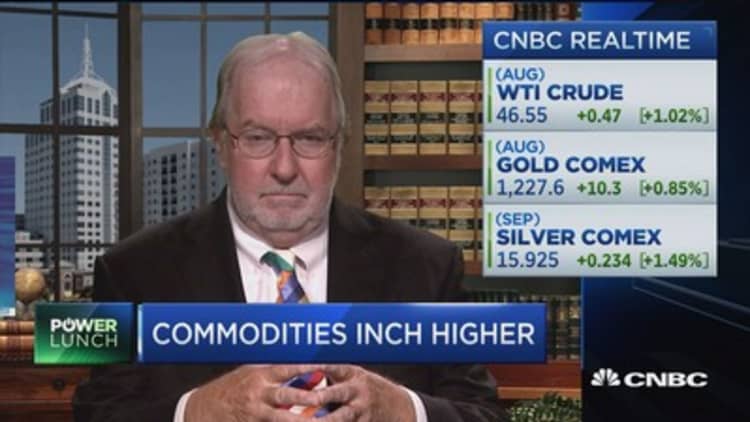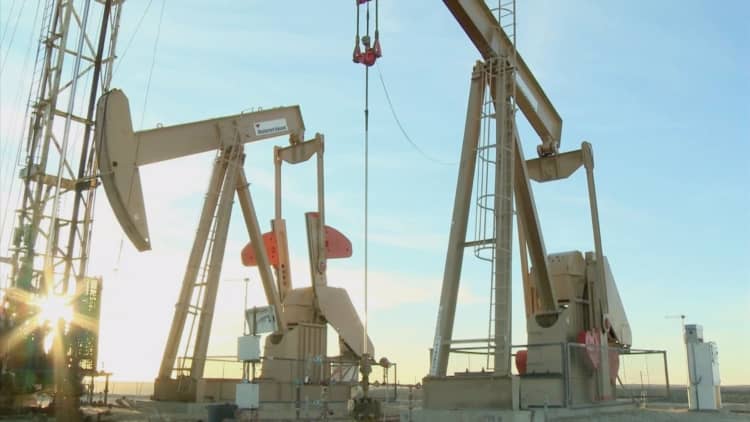Oil prices eased back on Monday after rising roughly 5 percent last week, as investors continued to await strong indications that an OPEC-led effort to drain a glut was proving effective.
Libya's national oil production stands at 1.03 million barrels per day, little changed from its level since the end of last month, an oil industry official said.
U.S. drillers added two oil rigs in the week to July 14, bringing the total to 765, Baker Hughes said on Friday. Rig additions over the past four weeks averaged five, the slowest pace of growth since November.
Key technical indicators are bullish, with prices rising above the short-term 50-day moving averages, traders said.
Brent crude futures were down 47 cents, or 1 percent, at $48.44 per barrel at 2:48 p.m. ET (1848 GMT). U.S. West Texas Intermediate (WTI) crude futures ended Monday's session at $46.02 per barrel, slipping 52 cents, or 1.1 percent.

"The idea of higher production levels, particularly in the U.S., Libya and Nigeria ... I think that seems to have been priced in for the moment," said Gene McGillian, manager of market research at Tradition Energy.
"I am skeptical. I think the market has bounced but it's having trouble finding traction to move higher probably because some the drop off in inventories are likely due to gasoline demand picking up."
A sharp drop in U.S. crude inventories in the week to July 7 supported prices last week. But crude stocks in industrialized nations remained high, putting a brake on the oil price rally.
"The market is not doing too much today — it feels like wait and see," said Olivier Jakob of oil analyst Petromatrix. "There is some rebalancing in products, but overall the layers of stocks are still very large."
U.S. gasoline margins rose to the highest since April 24 amid signs of improved demand and inventory declines, traders said.
Oil prices are less than half their mid-2014 level because of a persistent glut, even after the Organization of the Petroleum Exporting Countries, plus Russia and other non-members started a supply-cutting pact in January.
While the OPEC-led cuts have offered prices some support, rising supplies from Nigeria and Libya, two OPEC members exempt from the pact, have weighed on the market, as has growth in U.S. shale production.

Kuwait said on Friday the market was on a recovery track due to rising demand and that it was premature to cap Nigerian and Libyan output. An OPEC and non-OPEC committee meets in Russia on July 24 to discuss the impact of the deal.
In a sign of strong demand, data on Monday showed refineries in China increased crude throughput in June to the second highest on record, with some independent plants raising output even as state oil majors prepare to take drastic steps to cut production during the peak summer season.
OPEC is hoping higher demand in the second half will get rid of excess inventories.
"There is almost an agreement that the second half of the year should be tighter than the first half due to significant jumps in demand forecasts," oil broker PVM said. "The net result is a rise in the demand for OPEC oil."
Some analysts cautioned against too much optimism. "These factors (China data and slowing U.S. drilling) would act more to put a bottom in place for oil prices rather than spurring growth to new highs," said Sukrit Vijayakar, director of energy consultancy Trifecta.

